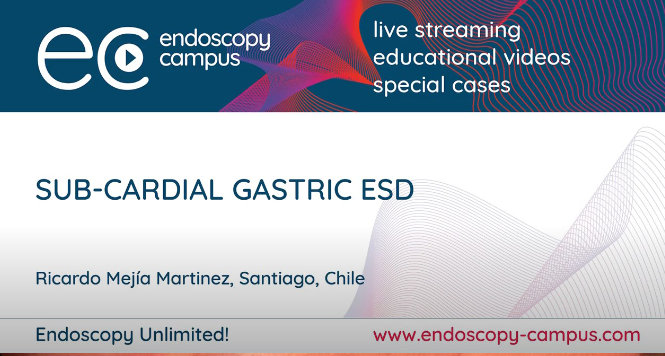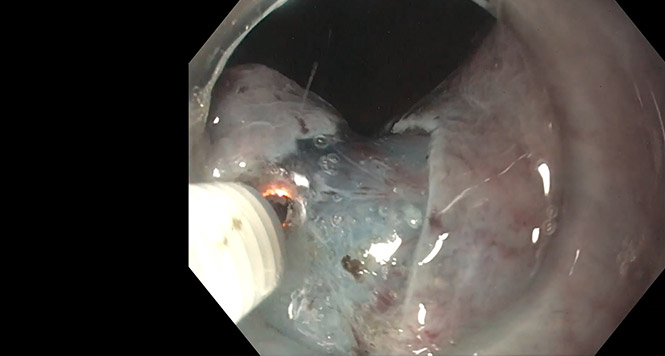Randomized Controlled Trial Shows Hemostatic Peptide Solution TDM-621 Reduces Need for Coagulation Forceps Treatment During ESD by 80%
Douglas K. Rex, MD, MASGE, reviewing Uraoka T, et al. Am J Gastroenterol 2022 Nov 30.
Bleeding can be problematic during endoscopic submucosal dissection (ESD). The bleeding point may be difficult to identify, and coagulation may lead to muscle injury and perforation.
In a multicenter randomized controlled trial from Japan, patients undergoing gastric or rectal ESD who had bleeding occur during ESD were randomized to treatment with coagulation forceps first versus instillation of the peptide solution TDM-621, followed by coagulation if the bleeding persisted after 3 minutes.
In the primary endpoint, the number of coagulation-forcep treatments per case was 4.9 without TDM-621 and 1.0 with TDM-621. Hemostasis was achieved with TDM-621 without using electrocautery in 62% of cases, and the mean dose of TDM-621 was 1.75 mL. The time to achieve hemostasis was longer with TDM-621 than without (210 vs 93 seconds). There was no difference in adverse events between arms.

COMMENTThis hemostatic peptide solution has been commercially available in Europe and Canada for several years but became available in the U.S. only recently. This study shows it could be adjunct to hemostasis in ESD.
Note to readers: At the time we reviewed this paper, its publisher noted that it was not in final form and that subsequent changes might be made.
CITATION(S)
Uraoka T, Uedo N, Oyama T, et al. Efficacy and safety of a novel hemostatic peptide solution during endoscopic submucosal dissection: a multicenter randomized controlled trial. Am J Gastroenterol 2022 Nov 30. (Epub ahead of print) (https://doi.org/10.14309/ajg.0000000000002060)


